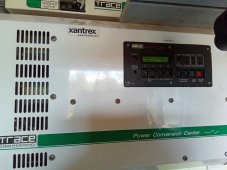That is why it is really important to at least have the user be able to log some information for you. I would be very curious what happens at the low end of the operating temperature range and if that was not part of the problem. If this whole thread is bad press for SS, at least something useful could have been learned from it.We are running this under oscilloscope, the problem we face to be clear is that a new XW pro in our shop with the exact batteries (we took them back from @Koldsimer) with the exact same schneider firmware runs just fine off of 2 5000w packs, so we can see that voltage reacts to this but the levels in our shop will not represent failure of the unit.
we are collaborating directly with Eric at Schneider about this now, trying to get a categorical assurance relative to their circuit that we are in the clear
Oh well, hindsight 20-20 and all that.




